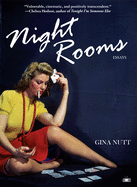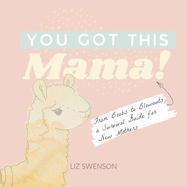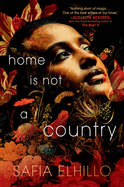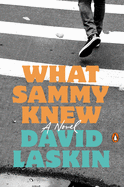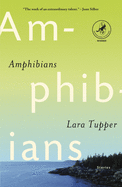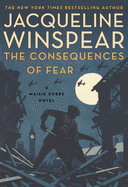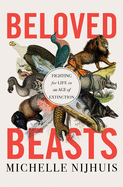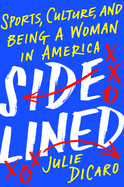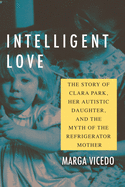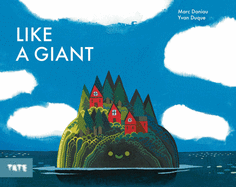Tuesday, March 23, 2021
It's been little more than a decade since Leslie Jamison's work began to attract attention, but in that time, she's established her preeminence in the field of creative nonfiction, as exemplified by these three books.
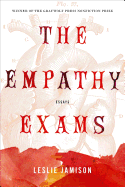 The epigraph to Jamison's debut collection, The Empathy Exams: Essays (Graywolf Press, $16), quotes the Roman playwright Terence: "I am human: nothing human is alien to me." The 11 essays that compose this collection provide formidable evidence that this is a touchstone of Jamison's work. The title essay juxtaposes an account of her work as a medical actor with the story of the abortion she underwent at age 25. From there, she addresses subjects that include the disorder Morgellons disease and the murder of three boys in a small Arkansas town in the 1990s, all leading her to the conclusion that "paying attention yields as much as it taxes."
The epigraph to Jamison's debut collection, The Empathy Exams: Essays (Graywolf Press, $16), quotes the Roman playwright Terence: "I am human: nothing human is alien to me." The 11 essays that compose this collection provide formidable evidence that this is a touchstone of Jamison's work. The title essay juxtaposes an account of her work as a medical actor with the story of the abortion she underwent at age 25. From there, she addresses subjects that include the disorder Morgellons disease and the murder of three boys in a small Arkansas town in the 1990s, all leading her to the conclusion that "paying attention yields as much as it taxes."
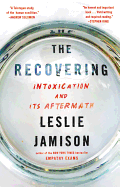 The Recovering: Intoxication and Its Aftermath (Back Bay Books, $18.99) is a searing work of memoir and reportage. In it, Jamison surveys the wreckage of her own addiction, vividly describing her stumbles on the winding road to recovery. In tandem with this story, she investigates the relationship between substance abuse and creativity, probing the lives of writers like John Berryman and Jean Rhys to help answer a question that has shadowed her own artistic life.
The Recovering: Intoxication and Its Aftermath (Back Bay Books, $18.99) is a searing work of memoir and reportage. In it, Jamison surveys the wreckage of her own addiction, vividly describing her stumbles on the winding road to recovery. In tandem with this story, she investigates the relationship between substance abuse and creativity, probing the lives of writers like John Berryman and Jean Rhys to help answer a question that has shadowed her own artistic life.
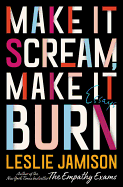 In Make It Scream, Make It Burn: Essays (Back Bay Books, $17.99), Jamison returns to the form in which she excels. This collection is less thematically unified than its predecessor, but no less fascinating. Once again, she moves effortlessly between memoir, criticism and journalism, and there seems to be no limit to the breadth of her curiosity when it comes to subjects like the Museum of Broken Relationships in Croatia or James Agee's Let Us Now Praise Famous Men. --Harvey Freedenberg, freelance reviewer
In Make It Scream, Make It Burn: Essays (Back Bay Books, $17.99), Jamison returns to the form in which she excels. This collection is less thematically unified than its predecessor, but no less fascinating. Once again, she moves effortlessly between memoir, criticism and journalism, and there seems to be no limit to the breadth of her curiosity when it comes to subjects like the Museum of Broken Relationships in Croatia or James Agee's Let Us Now Praise Famous Men. --Harvey Freedenberg, freelance reviewer
What Sammy Knew
by David Laskin
As 1969 turns to 1970 on Long Island in New York, nerdy high school writer Sammy Stein crashes a New Year's Eve party that changes his life forever. In What Sammy Knew, David Laskin tells an aching story about loss of innocence, infused with sex, drugs and rock 'n' roll.
Sammy attempts to increase his social standing by crashing the party at a popular kid's house; there he bumps into Richard, a childhood friend now living in Manhattan. Richard insists they do bong hits and introduces Sammy to gorgeous and out-of-his-league Kimmy Goodman. The unlikely pair share outrage at their parents' oppression of their Black housekeepers. Finding Sammy a kindred spirit, Kimmy promptly takes his virginity. All is well with the young couple until Kimmy gets into a heated argument with Sammy's father over the treatment of Sammy's housekeeper. Already a budding activist, Kimmy encourages Sammy to leave their mundane existence on Long Island, escape to New York City and help the Black Panthers change the world. Richard agrees to let the two crash at his place in the city. At the first protest they attend, Kimmy mounts the stage and impresses the organizers while Sammy is shaken by a dangerous encounter with police. When he realizes Kimmy is willing to commit violence for what she believes in, Sammy must decide how far he'll go to be with her.
Coming-of-age stories tend to wallow in familiarity, but Laskin adroitly integrates heartache, rock 'n' roll and violence, and references enough fist-pumping songs of the era, to kick this one up a notch. --Paul Dinh-McCrillis, freelance reviewer
Discover: In this breathless coming-of-age story, a naïve teenage writer enters the fast-paced lifestyle of 1970 New York City.
Amphibians
by Lara Tupper
Mobility, adaptability and colorful changes are confronted by the girls and women in Lara Tupper's nimble interlinked collection, aptly titled Amphibians. Although each memorable story easily stands alone, to seek and recognize the deft connections intensifies the reading experience. Unnamed narrators bookend the collection, requiring careful attention to parse how "Amphibians" and "Good Neighbors," respectively, dovetail with other stories. "Amphibians," the collection's longest and strongest, introduces "the girl," who, despite decades of maturation, remains "the girl" to the four most significant adults in her life--her parents, her mother's best friend and husband. Her identity reveal comes in "Spoils."
Traveling women appear in multiple stories, as if being elsewhere might mean the chance to be someone else. In "Dishdash," college student Mo visits her expat bartender brother, Mickey, in Dubai, hoping to escape a breakup, only to realize she's been the customer-attracting bait. Dubai is again the setting in "Belly Dancing," where Allie's six-month cocktail pianist gig makes her recall the teenage affair she had with her piano teacher. Allie's BFF Sam watches her mother leave her cheating father in "Glass"; the adult Sam, working as a dancer on an international cruise ship, cheats on her married lover in "Ting," then is cheated on in "Fishing." Finally, in "Good Neighbors," a nameless woman in a stifling relationship heads for the cleansing water.
Tupper's 11 stories took 20 years of writing, and won the 2019 Leapfrog Fiction contest. As they bounce across countries and continents, these girls and women try on, sometimes adapt, often discard then reinvent identities in their search for understanding and fulfilment. --Terry Hong, Smithsonian BookDragon
Discover: Lara Tupper's 11 nimble interlinked stories follow girls and women around the world on various journeys of escape, experience and reinvention.
Mystery & Thriller
The Consequences of Fear
by Jacqueline Winspear
In The Consequences of Fear, the 16th entry in Jacqueline Winspear's charming Maisie Dobbs series, London is being decimated by the Blitz. Twelve-year-old Freddie Hackett is serving as a message runner for the government, because children can get through bombed-out areas during the blackout, whereas cars or bicycles would be trapped. One dark night on a run, Freddie witnesses a struggle that he thinks ends in a stabbing. Shocked, he continues on to deliver his message, only to come face to face with the possible murderer. But by the time he reports the crime, the body (and the murderer) have both vanished.
The police think Freddie is delusional, traumatized by the things he has experienced during the Blitz. But Maisie, ever empathetic, is convinced that Freddie actually saw something. She begins a side investigation that puts her at odds with her current job working for a top-secret government agency--an agency that most emphatically does not want Maisie digging around for a murderer in the middle of the war effort, especially a murderer who may have diplomatic ties to the British government.
Gently paced and nuanced, The Consequences of Fear is a thoughtful look at the repercussions of war and trauma. Maisie's friends and relatives are affected by nearly every facet of the war, as are the Hacketts and countless other families. Winspear (To Die but Once) does a superb job of capturing the determined spirit of the British populace as they face down the Nazi threat. --Jessica Howard, bookseller at Bookmans, Tucson, Ariz.
Discover: In this atmospheric historical mystery, a boy witnesses a stabbing during the Blitz.
On Harrow Hill
by John Verdon
John Verdon's clever, cerebral mysteries about retired New York Police Department homicide detective Dave Gurney take another leap forward in On Harrow Hill; this seventh outing is part puzzle, part police procedural and all entertainment.
Verdon has a knack for creating outlandish, almost unbelievable, situations that reach logical, realistic conclusions. On Harrow Hill begins when Dave is asked to help his old partner Mike Morgan, now the police chief of Larchfield, an affluent village with a low crime rate about an hour from Dave's Catskills home in upstate New York.
The odd crime involves 78-year-old Angus Russell, Larchfield's wealthiest, most powerful and despised resident, murdered while his 28-year-old wife, Lorinda, slept in her bedroom next door. The killer seems obvious--the fingerprints of local ex-con Billy Tate are on the murder weapon. But Billy died the day before the murder, struck by lightning, then falling from the roof of a church he was vandalizing. Mike and the medical examiner witnessed Billy's death. Then a video shows Billy breaking out of his coffin in a funeral home's basement. Pulling together all the plot threads--which grow even more complicated--takes all of Dave's thoughtful perception, but also his ability to re-evaluate his sleuthing skills.
Dave, who thrives on bizarre cases, is well aware that a "trick of the mind" can taint even his insight. Larchfield emerges as a full character, as duplicitous and strange as its residents. Yet no matter how weird the circumstances of On Harrow Hill become, Verdon (Shut Your Eyes Tight) retains tight control of his plot. --Oline H. Cogdill, freelance reviewer
Discover: Odd crimes get more bizarre in this seventh clever, cerebral mystery featuring retired NYPD homicide detective Dave Gurney.
Biography & Memoir
Night Rooms: Essays
by Gina Nutt
Night Rooms by Gina Nutt (Wilderness Champion) is a startling collection of 18 essays ruminating on life experiences, cultural tropes and horror films, examining questions of gender, fear and grief. Fragmented in form, but firmly interconnected, these essays refuse to look away. Nutt's prose is lyrical, provocative, intimate and intelligent.
"I used to imagine wanting someone alive would revive them, if caught right after dying." This opening line establishes one of Nutt's main subjects: the deaths of loved ones and how people do (or don't) handle them. She wants to find "a balance between mourning and moving on. How does it look to not be so enamored with the image of the final girl--the one who survives--that we forget, or disavow, our dead (selves)." That final girl of horror movies is objectified: a symbol, a survivor, part of a lineage.
Haunted houses, horror flicks with sharks in them, ghost stories and slasher films meet beauty pageants, ballet lessons, sexual explorations and home décor to question what it is about the macabre that fascinates. Although subtitled as "essays," Night Rooms feels more like it contains chapters, which make reference to one another as much as within themselves. The deaths that occupy the narrator in the book's beginning are relevant again at its close. Together, these pieces form an experience that is sensory, intellectual and emotional, illuminating difficult and even uncomfortable truths.
Part personal reflection and part cultural study, this unusual collection will haunt readers, in the best ways. --Julia Kastner, librarian and blogger at pagesofjulia
Discover: These 18 essays about gender, horror, grief and much more are thought-provoking, discomfiting and lovely.
Science
Beloved Beasts: Fighting for Life in an Age of Extinction
by Michelle Nijhuis
Michelle Nijhuis, an award-winning writer and a project editor at the Atlantic, pens a lively, impeccably researched history of the conservation movement in Beloved Beasts, peopled with memorable characters.
Its roots began with wealthy hunters who wished to preserve their game, and Nijhuis does not shy away from the shadow that elitism and racism cast over the cause: "The story of modern species conservation is full of people who did the wrong things for the right reasons, and the right things for the wrong reasons." Taxidermy and then zoos were the early means by which conservationists elicited compassion for endangered animals. William Hornaday went from chief taxidermist in 1888, at what would become the Smithsonian National Museum of Natural History, to director of a "new zoological park," later the Bronx Zoo--eight years later. The evolution of Hornaday's attitudes, alongside the changes within the conservation movement itself, is thrown into high relief through his unlikely friendship with Rosalie Edge, who challenged the National Association of Audubon Societies for allegedly "serving sportsmen better than birds." Meanwhile, Charles Darwin's ideas on the "survival of the fittest" became twisted by Francis Galton (his cousin!) into eugenics.
Some names are instantly recognizable, such as Rachel Carson and Carl Linnaeus; others are forgotten but their work lives on, such as Linnaeus's friend Peter Artedi, who contributed meticulous work categorizing fish. Nijhuis nimbly and thoughtfully demonstrates how--to this day--politics and science, presidents and conservationists twine together in the ebb and flow of the sharing of resources between human and nonhuman beings. --Jennifer M. Brown, senior editor, Shelf Awareness
Discover: An award-winning science journalist offers a fascinating and complex history of the conservation movement and its flamboyant characters.
Sports
Sidelined: Sports, Culture, and Being a Woman in America
by Julie DiCaro
As the successes of athletes like the U.S. Women's National Soccer Team, Simone Biles, and, of course, Serena Williams become more prominent, are women really still "sidelined" in the world of sports? In Sidelined: Sports, Culture, and Being a Woman in America, sports journalist Julie DiCaro painstakingly proves that even today, "the sports media industry shows us what America might look like if we'd never passed Title VII or the Equal Pay Act.... Sports talk radio is one of the least diverse fields in media... and it's only getting worse." Beyond detailing the egregious pay discrepancies and hiring practices directed at women, DiCaro delves into the degree of harassment women face, whether as athletes or members of the media covering them.
DiCaro starts by going back to the 1970s when Robin Herman became the first woman reporter to enter an NHL locker room and brings this into focus against a 1974 class action lawsuit filed by female reporters against the New York Times for discriminatory hiring practices. She carefully sets up both sports media and professional sports culture itself as exclusionary boys' clubs where women have been only grudgingly accepted. She uses that lens of the boys' club to demonstrate how that perception of who sports are supposed to be for has contributed to today's internet culture where female reporters like DiCaro herself are harassed online and cyberstalked. Through anecdotes, interviews and focused research, she shows the myriad ways these problems are structural and institutional, while highlighting female athletes and reporters who continue to break barriers by refusing to be sidelined. --Michelle Anya Anjirbag, freelance reviewer
Discover: Sports journalist Julie DiCaro passionately addresses sexism in sports in general and the harassment of female athletes and journalists in sports media spaces.
Parenting & Family
You Got This, Mama!: From Boobs to Blowouts, a Survival Guide for New Mothers
by Elizabeth Swenson
In a winning combination of supportive humor and helpful information, You Got This, Mama! by Elizabeth Swenson is a fantastic addition to the new parent guidebook genre.
Why is my baby's poop green? Are my breasts supposed to feel like this? How will my baby tell me she's hungry? And where the heck did my libido go? Swenson's colorful and spare scrapbook-style guidebook addresses questions new parents may not even know to ask, with perceptive humor and empathy for the experience. It is filled with tongue-in-cheek notes like "Today's Goal: Keep the tiny human alive" and "Being a mom looks less like Pinterest and more like Picasso," alongside flowcharts, simple graphs, inspirational quotes and letters to the reader. Her chosen medium and charming art do not belie the helpful nature of the words inside, which include coverage of sensitive topics such as post-partum depression, post-delivery care (for both vaginal and C-section births) and the guaranteed insecurities that all new parents experience. "Being a mom is an intensely personal thing and everyone is trying their best... YOU know best." With regular notes that parenting is rarely a solo gig, she reminds readers that asking for help--both professional and personal--is not only normal but recommended.
Swenson's guidebook takes the edge off of serious questions without dismissing the difficulties of infant and self-care. While You've Got This, Mama! is not a replacement for the more in-depth medical guides many new parents rely on, its breakdown of important questions with a best friend's humor and accurate, real-world practicality makes it both useful and entertaining supplemental reading, not to mention a great gift for new parents. --Jennifer Oleinik, freelance writer and editor
Discover: Combining humor, empathy and easily digestible facts, You Got This, Mama! is a charming and helpful guide for new parents.
Intelligent Love: The Story of Clara Park, Her Autistic Daughter and the Myth of the Refrigerator Mother
by Marga Vicedo
In Intelligent Love: The Story of Clara Park, Her Autistic Daughter and the Myth of the Refrigerator Mother, philosopher and science historian Marga Vicedo (The Nature and Nurture of Love) chronicles the remarkable journey of a courageous mother and her indefatigable efforts to teach her autistic daughter, Jessy, all that she would need to know to navigate her world.
At the time of Jessy's birth in 1958, autism was considered an emotional disorder caused fully or at least partially by a lack of maternal affection, and there were no treatments or support available for autistic children. Doctors were especially suspicious of educated, intellectually curious mothers like Clara, since it was assumed that intellect interfered with a mother's ability to nurture. Clara rejected this verdict and, refusing to give up on Jessy, took it upon herself to teach her daughter how to interact socially, how to read, draw and brush her teeth.
Despite behavioral challenges that drove Clara to tears, Jessy made slow, steady progress. Clara defended the value of a mother's "intelligent love" in her groundbreaking book, The Siege, proving through her own success with Jessy that a parent's insight and expertise is valuable and deserves to be taken seriously by the experts.
Enhanced by Vicedo's brilliantly detailed storytelling, Intelligent Love provides an important historical context for our contemporary understanding of autism and illustrates how society's growing awareness of the value of neurodiversity can be directly attributed to parents like Clara, who refused to adhere to medically and socially accepted limitations on their children's potential. --Shahina Piyarali, reviewer
Discover: A philosopher nestles a compassionately crafted, extraordinary family drama within a broader discussion of the contentious, and often shocking, history of autism in the U.S.
Children's & Young Adult
Like a Giant
by Marc Daniau, illus. by Yvan Duque
A child spends a day on a dreamy romp with an enormous friend in Marc Daniau and Yvan Duque's whimsical picture book odyssey, Like a Giant.
A bright-eyed and bulbous giant is guided by a signpost across a dark plain to a child's balcony. In the slanting light of dawn, the child, wearing a jaunty puffin hat, awaits the behemoth with familiarity, expecting "the giant will come to take me on an adventure." The partners strike out "with giant steps... leav[ing] the city behind" and traverse forest, desert, ocean and vale, meeting each sweeping landscape with equal enthusiasm. "Everything will amaze us," the child confides with conviction. "Everything will enchant us." As the day draws to a close, the giant returns the sleepy child home and the pair separate with a wave, ready to resume their escapades tomorrow.
Daniau's concise and confident language emphasizes feral similes and geological descriptors to detail the pair's explorations: "We will eat like wolves, dragons and pandas.... We will discover ruins, cliffs, fossils, jungles, corn fields and parks." Duque does a lot of the work of characterization by depicting the giant in morphing forms that befit each environment and the child in their cheery red cape and adorably offbeat hat. Duque illustrates wide horizontal spreads in a particularly lush palette of saturated blues and greens, while anthropomorphized objects, such as a mailbox or mountains, lend fanciful details. Subtle shifts in light chart the passing hours, expertly mirroring the endpapers to frame the day's imaginative journey.
Equally pleased with their adventure and each other, the pair thoroughly savor their time together until they "return home shivering with joy." --Kit Ballenger, youth librarian, Help Your Shelf
Discover: In this imaginative and whimsical picture book, a giant and child invite readers to travel with them to glorious locations.
Home Is Not a Country
by Safia Elhillo
In her YA poetry debut, Home Is Not a Country, Safia Elhillo (author of the adult poetry collection The January Children) writes about a teen detached from the country she was born in and isolated in the country in which she lives.
Fourteen-year-old Nima is an immigrant living in the U.S. with her working-class mother. The teen doesn't feel connected to her birth country, nor to the small suburban city where she resides. She struggles to belong, lacking a sense of self and targeted as a Muslim in a post-9/11 United States. As Nima tries to figure out who she is, she is haunted by the death of her father and by her name (which means "grace," an attribute she lacks)--a name she believes is not the one her mother had planned to give her. When her only friend, Haitham, is the victim of a brutal hate crime, Nima decides it is all the more important that she find her true self: "so busy looking/ at my one empty hand," she thinks, "i almost missed everything/ filling the other."
Elhillo uses magical realism to help Nima discover herself and learn the connection to her name. Home Is Not a Country is broken up into four beautifully written and composed sections, sometimes in Nima's voice, sometimes in Haitham's. Elhillio eschews capital letters, creating a feeling of immediacy that evokes Nima's deep pain and desire to understand. Elhillo's tender and descriptive writing focuses on family and identity and may leave readers feeling the need to live life to the fullest--to enjoy everything and everyone because one never knows what can be snatched away. --Natasha Harris, freelance reviewer
Discover: In this passionate, piercing YA collection of poems, a teenage Muslim immigrant learns to deal with family and identity in a post-9/11 U.S.


